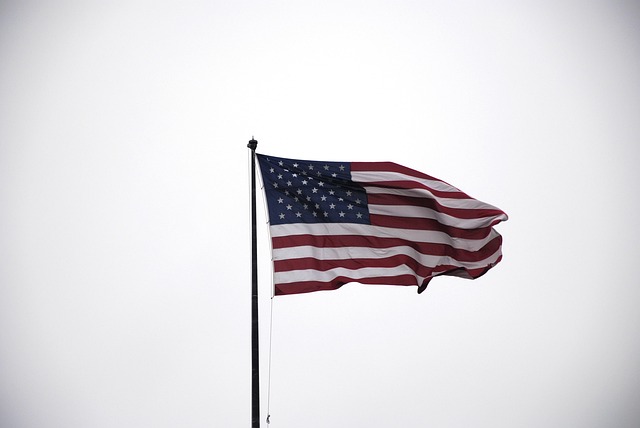1. Urban Flooding on the Rise: Why Cities in America Are at Greater Risk Than Ever
Urban flooding has become a critical issue in recent years, and its rise is no coincidence. The increased frequency and intensity of floods in America are directly tied to rapid urbanization, aging infrastructure, and environmental degradation. As cities expand and more land is paved over, natural absorption of rainfall is drastically reduced. This overwhelms stormwater systems, leading to flash floods even with moderate rainfall. Many American cities weren’t designed to handle the sheer volume of water that extreme weather now brings. As a result, floods in America are no longer seasonal or isolated they are a persistent urban threat. Areas like Houston, Detroit, and parts of New York have witnessed repeated flooding, sometimes within weeks or months of the last incident. This pattern reveals a concerning trend that will only worsen if cities fail to invest in smarter urban planning and water management systems.
What makes floods in America especially alarming today is the convergence of multiple risk factors. Climate change, urban sprawl, and outdated drainage infrastructure are colliding to create a perfect storm. Moreover, many cities lack updated flood risk assessments and emergency response protocols. Insurance data, FEMA maps, and real-time satellite imagery show that flood-prone zones have significantly expanded in the last two decades. The financial toll is staggering: billions of dollars are lost annually due to flood damage, with insurance claims soaring and federal disaster funds stretched thin. Yet, urban planning still fails to integrate flood mitigation as a top priority. Communities are caught off guard, and response times remain inadequate. Floods in America are no longer just a natural hazard they are a man-made crisis fueled by negligence, poor planning, and short-term thinking. Addressing this growing threat requires immediate action from city planners, policymakers, and citizens alike.
2. Floods in America: Top Cities Facing Catastrophic Water Invasion
Certain cities in the United States are now known hotspots for catastrophic flooding. Due to geographical location, coastal exposure, and infrastructure limitations, these cities are facing relentless water invasions. New Orleans, Miami, and Houston top the list, but cities like St. Louis, Charleston, and even inland areas like Nashville are not far behind. The rising frequency of floods in America is not limited to hurricanes or seasonal storms it’s also driven by extreme rainfall events and overwhelmed drainage systems. FEMA has repeatedly revised its flood maps to reflect growing risk zones in metropolitan areas. These revisions show that millions more people are now living in flood-prone zones than just a decade ago. Urban planning decisions made in the past are now being tested by modern climate extremes, and the results are devastating.
Data from NOAA and FEMA highlight that floods in America are not distributed equally. Coastal cities deal with storm surge and sea level rise, while inland urban centers face river overflows and urban runoff. Washington, D.C., recently experienced flash floods that shut down roads and flooded public transit. In New York City, parts of the subway system are constantly threatened by heavy rainfall. What makes the situation worse is the lack of consistent federal support for localized flood mitigation projects. City governments are often left to fend for themselves with outdated equipment and limited budgets. The need for upgraded levees, pump systems, and green infrastructure has never been greater. For Americans living in these high-risk cities, understanding flood vulnerability is no longer optional it’s essential to their safety and economic stability.
3. How Climate Change Is Supercharging Floods in American Cities
Climate change is no longer a future threat it’s a present reality that’s supercharging floods in America. Rising global temperatures mean more moisture in the atmosphere, leading to more intense and longer-lasting rainfall events. As a result, cities that once dealt with moderate water issues are now grappling with severe flooding several times a year. Research shows that a 1°F increase in temperature can result in up to 4% more rainfall. When this additional water hits impervious urban surfaces, it rapidly collects and overwhelms stormwater systems. From Seattle to Atlanta, communities are witnessing historic rainfall levels that surpass old engineering assumptions. Climate scientists agree: these patterns are here to stay, and without intervention, floods in America will become even more destructive.
The impact of climate change on urban flooding goes beyond just stronger storms. Rising sea levels are pushing saltwater into rivers, wetlands, and drainage systems, reducing their ability to absorb stormwater. This phenomenon, known as compound flooding, has been devastating in areas like New Jersey and South Florida. Warmer oceans also fuel hurricanes, which then dump massive amounts of rain far inland, as seen during Hurricane Harvey. Unfortunately, most cities were built with climate patterns from the past in mind. Today’s climate reality requires a complete rethinking of infrastructure and emergency preparedness. Policymakers must prioritize climate adaptation strategies that directly address the rising threat of floods in America, including elevating infrastructure, restoring wetlands, and creating better runoff pathways in urban environments.
4. The Hidden Cost of Floods in America: Real Estate, Rent, and Relocation
Floods in America aren’t just about water damage they carry massive hidden costs that affect the entire housing ecosystem. One major issue is the declining value of real estate in flood-prone areas. Homes once considered prime property now face plummeting resale value due to repeated flooding and increasing insurance costs. This is especially true in coastal cities, where sea level rise and tidal flooding are becoming regular events. Mortgage lenders and insurance companies are starting to blacklist certain zip codes, making it harder for homeowners to get coverage or financing. In many communities, the psychological toll is just as high: people live in constant fear of the next flood, knowing their property and savings could be wiped out in an instant.
Floods in America are also driving up rent prices and forcing families to relocate. As some neighborhoods become uninhabitable, demand rises in safer areas, causing gentrification and pushing out low-income residents. FEMA buyout programs, intended to help residents move out of flood zones, often undercompensate homeowners and take years to process. Meanwhile, displaced families face rising rents, unstable housing situations, and limited access to schools or jobs. Cities are struggling to keep up with relocation demands, and affordable housing stock remains limited. The ripple effect of flooding is clear: it’s not just a weather issue — it’s a housing crisis. More transparent flood disclosure laws, updated risk assessments, and long-term urban planning are critical to curbing the hidden economic and social toll of floods in America.
5. Infrastructure on the Brink: Why Urban America Can’t Handle Major Flooding
Many cities across the U.S. are waking up to the hard truth: their infrastructure simply cannot handle the increasing threat of floods in America. From century-old sewer systems to underfunded levees and poorly maintained drainage networks, the backbone of urban America is crumbling under pressure. The result? Roads turn into rivers, basements flood, and entire neighborhoods become islands during storms. In cities like Baltimore, St. Louis, and Chicago, outdated stormwater systems buckle under even moderate rainfall, let alone extreme weather events. Much of the infrastructure was designed for a different era one with lower population densities and milder weather. The growing mismatch between modern climate realities and outdated city systems is a recipe for repeated disaster.
The cost of upgrading infrastructure is high, but the cost of inaction is far greater. Each year, floods in America cause billions of dollars in property damage, disrupt essential services, and drain local economies. Municipal budgets are already strained, and most cities lack the funding or political momentum to overhaul aging infrastructure. Federal programs like the Infrastructure Investment and Jobs Act are a step forward, but implementation is slow and uneven. Green infrastructure such as permeable pavements, bioswales, and urban wetlands offers scalable, cost-effective solutions, but adoption is still limited. For American cities to remain livable and economically viable, immediate investment in resilient infrastructure is no longer a luxury it’s a necessity. Failure to act now means accepting a future where urban flooding becomes the norm, not the exception.
6. Flood Zones Are Expanding: Is Your City Next on the List?
Flood zones in the U.S. are expanding rapidly, placing more cities and residents at risk than ever before. New FEMA flood maps reveal that millions of homes and businesses are now located in high-risk flood areas that weren’t even considered vulnerable a decade ago. Climate change, shifting weather patterns, and urban sprawl are all driving this expansion. Floods in America no longer follow predictable coastal or riverine boundaries they’re reaching deeper into suburban and inland regions. As flood zones grow, so do insurance premiums, building restrictions, and the overall risk to life and property. Many homeowners are shocked to find themselves newly labeled in a flood zone, facing steep insurance hikes and property devaluation with little recourse or warning.
The expansion of flood zones also brings into question the accuracy and timeliness of FEMA’s mapping and zoning policies. Many of the agency’s maps are outdated, failing to reflect current flood risks brought on by climate change. As a result, developers continue to build in vulnerable areas, and cities issue permits without fully understanding the flood threat. This has led to devastating consequences in places like Central Texas, parts of California, and even the Midwest. Homebuyers must be more proactive in researching flood history and future risk before investing. Municipalities, on the other hand.
7. Sea Level Rise and Its Deadly Impact on Coastal American Cities
Sea level rise is one of the most urgent environmental threats facing coastal areas, and it’s dramatically increasing the frequency and severity of floods in America. As ocean levels rise due to melting glaciers and warming waters, even moderate storms are now capable of causing widespread flooding in cities like Miami, Charleston, and Norfolk. In some areas, “sunny day flooding” when high tides push seawater into streets without any rainfall is becoming a regular occurrence. The combination of sea level rise and storm surge creates deadly flood scenarios that can cripple transportation, erode coastlines, and damage critical infrastructure. With millions of Americans living along the coasts, the economic and human impact of sea level–induced flooding is escalating quickly and demands immediate action.
Floods in America’s coastal regions are no longer hypothetical; they are already altering the landscape of entire cities. Real estate values are dropping in flood-prone zip codes, and insurance companies are pulling back from high-risk coastal markets. The threat is not limited to large hurricanes even minor weather events now pose serious risks due to higher sea levels. Emergency services, hospitals, and schools are often located in vulnerable zones, placing lives at risk during each flooding event. Coastal infrastructure like seawalls and drainage canals, originally designed for 20th-century sea levels, are failing under current conditions. To protect American coastal cities, investment in resilient infrastructure, managed retreat strategies, and regional climate planning must become a national priority.
8. Flood Insurance in America: Why Coverage Is Becoming Unaffordable
Paragraph 1:
As the risk of flooding increases across the United States, flood insurance is becoming both more essential and less affordable. The National Flood Insurance Program (NFIP), which provides the bulk of coverage for American homeowners, has recently implemented “Risk Rating 2.0” a new pricing model that aligns premiums with actual flood risk. While this system is more accurate, it has led to a dramatic increase in premiums for many property owners. In high-risk areas, annual flood insurance costs have doubled or even tripled, placing significant financial strain on middle- and low-income families. As floods in America become more frequent and severe, more homeowners are being required to carry insurance, often without government assistance to help absorb the costs.
Private flood insurance markets are slowly emerging, but they too are charging high premiums due to rising claims and reinsurance costs. In many flood-prone communities, especially those with repeated disaster declarations, insurance companies are refusing to write new policies altogether. This leaves homeowners vulnerable to catastrophic financial loss, especially in the wake of repeated floods in America. Moreover, many renters who are often not required to carry flood insurance are caught off guard when their belongings are destroyed with no recourse. To fix this, policymakers must reform the NFIP, expand subsidies for low-income families, and increase transparency around flood zone mapping. Without intervention, flood insurance could become a luxury that only the wealthy can afford leaving millions exposed to financial ruin.
9. From Disaster to Recovery: How Cities Rebuild After Devastating Floods
The road to recovery after major floods in America is long and often uncertain. Once the floodwaters recede, cities face the herculean task of rebuilding infrastructure, restoring services, and rehousing displaced residents. Immediate efforts focus on clearing debris, pumping out water, and restoring electricity and sanitation. However, long-term recovery involves rebuilding roads, bridges, schools, and housing all while trying to make these new systems more resilient against future floods. Cities like New Orleans, Houston, and Baton Rouge have undergone major reconstruction efforts in recent years, using billions in federal aid through FEMA, HUD, and other agencies. But access to these funds is often delayed, and smaller communities without strong political connections are frequently left behind.
Floods in America expose systemic vulnerabilities in emergency response, funding allocation, and social equity. Often, wealthier neighborhoods are rebuilt quickly, while low-income areas wait years for assistance. This disparity delays recovery and deepens inequality. Additionally, rebuilding efforts don’t always account for future risk many structures are reconstructed in the same flood-prone locations. To truly recover from flooding disasters, cities must adopt a forward-looking approach. This includes updating building codes, incorporating green infrastructure, and involving local communities in planning. Community resilience, not just physical reconstruction, should be the core objective. Recovery should not mean simply returning to the status quo, but preparing for a future where floods in America are more frequent and more intense.
10. The Inequality of Urban Flooding: Why Poorer Neighborhoods Suffer More
Floods in America do not impact all communities equally. Poorer neighborhoods often suffer the worst consequences due to systemic inequalities in infrastructure, disaster response, and government investment. These areas are more likely to have outdated stormwater systems, inadequate drainage, and lower building standards all of which increase vulnerability to flooding. In cities like Detroit, New Orleans, and Jackson, lower-income residents live in flood-prone zones not by choice but by necessity, as affordable housing is often located in high-risk areas. When floods hit, these communities are the last to receive aid and the slowest to recover, further entrenching cycles of poverty and displacement.
Environmental justice is a key issue in addressing floods in America. Studies show that minority and low income communities are more likely to be located near rivers, levees, and other flood-prone areas, largely due to historical patterns of segregation and discriminatory housing policies. Additionally, these communities often lack access to information, insurance, and legal support that could help them recover from flood disasters. Without intervention, urban flooding will continue to widen the gap between the wealthy and the disadvantaged. Equitable flood mitigation strategies such as targeted infrastructure investments, community education, and inclusive planning are essential to creating fair and effective disaster response systems. Ignoring these disparities puts millions of vulnerable Americans at greater risk.
11. Smart Cities vs. Rising Waters: Can Technology Save Flooded Urban America?
In the fight against urban flooding, technology is proving to be a powerful ally. Smart cities across the U.S. are leveraging data, sensors, and predictive analytics to better manage floods in America. These tools can detect rising water levels in real-time, predict storm surges, and alert emergency services before disaster strikes. Cities like Boston and San Francisco are installing smart drainage systems that automatically redirect stormwater based on rainfall intensity. Others are using AI-powered flood forecasting models to pre-position emergency resources. These innovations can significantly reduce damage and save lives, especially when integrated into urban infrastructure and planning.
Beyond sensors and forecasts, smart flood technology also includes long-term solutions like green roofs, permeable pavements, and digital twin simulations of entire cities. These technologies allow planners to visualize how floods in America will affect urban areas under different climate scenarios, enabling them to design more resilient infrastructure. However, smart tech solutions are often expensive and limited to wealthy cities. To be effective nationwide, federal and state governments must provide funding and technical support to smaller municipalities. Public partnerships can also play a key role in scaling smart flood management. Technology is not a silver bullet, but when combined with strong policy and community engagement, it could dramatically reshape America’s urban flood resilience.
12. Preparing for the Next Big Flood: What U.S. Cities Must Do Now
Floods in America are no longer rare disasters they are recurring events that demand year-round preparation. U.S. cities must move from reactive responses to proactive planning to avoid catastrophic consequences. This begins with accurate flood risk assessments, modern infrastructure upgrades, and climate adaptive urban design. Emergency evacuation plans must be tested regularly, and critical facilities like hospitals and schools must be flood-proofed. Public communication channels also need to be improved so residents can receive real-time updates during extreme weather events. Resilience isn’t just about surviving a flood it’s about minimizing disruption and bouncing back quickly.
Community involvement is crucial in preparing for future floods in America. Local governments must work closely with neighborhoods to create flood preparedness plans tailored to specific risks. This includes distributing flood kits, educating residents on evacuation routes, and offering incentives for home retrofits like elevated foundations and backflow preventers. Integrating nature based solutions such as wetland restoration and urban green spaces can also help absorb excess water and reduce flood pressure. Cities must also collaborate regionally, since water does not follow jurisdictional boundaries. The next big flood is not a matter of if, but when. By preparing now, U.S. cities can save lives, protect property, and ensure long-term economic stability in the face of growing flood threats.




